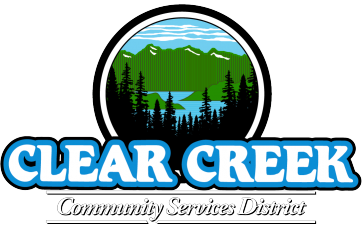To serve you better, we've assembled a list of our customers' most frequently asked questions. If you don't find your answer here, feel free to contact us.
How could I have used this much water?
You may not have - the numbers on your meter may have been transposed or hard to read. You could possibly have a leaky toilet or faucet that's difficult to detect. Just call the office and we'll work with you to solve the problem.
What do I do if I am experiencing low pressure?
Check your meter and the surrounding area for possible leaks. Next, locate and determine the age of your pressure reduction valve. Many times these fail closed meaning a severe reduction in pressure to your home. If you are still unable to determine the cause call our office and report low pressure for your residence/area. It could be something as simple as the Pressure Reduction Valve or something more serious such as a main line rupture. The district office phone number is 357-2121.
Why is my water discolored?
A repair could have been completed recently allowing air to enter the line, causing the milky look.
What chemicals does our utility district add to the water?
Only chemicals that are approved by the National Safety Foundation for treatment of drinking water that include polymers for the turbidity removal during the filtration process and chlorine for disinfectant as required by the California Department of Public Health and the State Water Resources Control Board.
My water tastes, looks, and smells funny. Is it safe to drink?
All public water systems are required to maintain a minimum chlorine level of 0.2 mg/L (tested at the end of each line) by state law. Systems that use chloramine as a disinfectant must maintain a level of 0.5 mg/L by state law. Our disinfectant levels are tested weekly in two different locations to ensure safety.
Why does debris come out of the faucet when running hot water?
Most likely your water heater needs to be flushed. CAUTION: Most manufacturers recommend hiring a professional to flush your water heater. If you plan on doing this yourself, read the owner's manual to keep from being hurt and or damaging the water heater.
Why do I have a previous balance when I know I sent in my payment?
We may have received it after the due date or we may not have received it at all. Call our office and we will help you solve the problem.
What is Backflow Control and why do I need it?
IF YOU HAVE A WELL ON YOUR PROPERTY:
The District’s public water system is designed for water to flow from the District to the user, not in reverse! A cross-connection or backflow condition is the unwanted reversal of flow through either back-pressure or back-siphonage into the potable water supply. This will occur whenever the pressure of the public water system becomes lower than the customer’s system beyond the water meter. These conditions may be caused by elevation changes, surges, and pressure differentials. Back siphonage may occur from pressure differentials caused by reduced pressure within the potable water system and may occur as a result of excessive supply line demands caused by a pipeline break or firefighting.
Please contact the District office if you are planning to inject any chemicals into your irrigation system so that we can assist you in complying with our requirements, prevent any potential contamination of the public water system, and protect public health and safety. Tasked with identifying and mitigating cross-connections in an ongoing effort to maintain a safe drinking water supply, the District has a Backflow Prevention Policy and a cross-connection control program, as required by federal and state regulations, pursuant to the federal Safe Drinking Water Act and Title 17 (Sections 7583— 7605) of the California Code of Regulations, which mandate that the District has the primary responsibility for water quality control.

